The views expressed in our content reflect individual perspectives and do not represent the authoritative views of the Baha'i Faith.
In the cremation or burial debate, the Baha’i teachings come down decisively in favor of burial, for three primary reasons – protection of the environment, human nature, and the dignity of our bodies.
In this essay in our series, we’ll look at the first of those reasons, and examine the environmental case against cremation and embalming.
Abdu’l-Baha, in response to an inquiry about cremation from the early American Baha’i Laura Clifford Barney, wrote:
Where universal phenomena are concerned, no matter how long and hard the human intellect may struggle to find the right procedures or the perfect system, it can never discover the like of the divine creation and its order of transferences and journeyings within the chain of life. For the transferences, the compositions, the gatherings and scatterings of elements, and of constituent parts and substances, proceed in a chain that is mighty and without flaw. Observe the effective universal laws and see to what a degree they are solidly established, secure and strong.
And just as the composition, the formation, and growth and development of the physical body have come about by degrees, so too must its decomposition and dispersal be gradual.
This chain of life, as Abdu’l-Baha called it, also refers to the “great chain of being,” or in Latin, the scala naturae or “ladder of being.” The concept came originally from Plato and Aristotle, and forms the scientific basis for ordering and classifying living and non-living matter, from minerals to plants to animals to human beings.
RELATED: Spiritual Birth: What Being Born Again Really Means
The Great Chain of Being and the Gaia Theory
In Abdu’l-Baha’s use of the term, the great chain of being refers also to the evolutionary biology of all existence, the inter-relatedness of all beings, and the continual movement and transmission of elements between each level of life. In a speech he gave in Paris in the early 20th century, Abdu’l-Baha elaborated – and in doing so, first proposed the “Gaia hypothesis,” the concept that the Earth itself evinces life:
In the physical creation, evolution is from one degree of perfection to another. The mineral passes with its mineral perfections to the vegetable; the vegetable, with its perfections, passes to the animal world, and so on to that of humanity. This world is full of seeming contradictions; in each of these kingdoms (mineral, vegetable and animal) life exists in its degree; though when compared to the life in a man, the earth appears to be dead, yet she, too, lives and has a life of her own.
The Gaia theory, developed 60 years later by the pioneering British chemist and environmentalist James Lovelock and the American evolutionary microbiologist Lynn Margulis, holds that living organisms constantly interact with their inorganic surroundings to form a synergistic and self-sustaining system. That system and its constant movement of elements perpetuates the conditions for life to thrive on our planet – which means that the Earth itself is alive.
This “mighty” system, Abdu’l-Baha pointed out in his response to Laura Clifford Barney, arises from the natural order – which means that human bodies, as an integral part of physical creation, should be allowed to return to the ecosystem naturally and gradually:
… the composition and decomposition, the gathering and scattering and journeying of all creatures must proceed according to the natural order, divine rule and the most great law of God, so that no marring nor impairment may affect the essential relationships which arise out of the inner realities of created things. This is why, according to the law of God, we are bidden to bury the dead.
Cremation violently interrupts and short-circuits those gradual natural processes, by immediately turning bodies into two by-products: ash and atmospheric pollution.
National Geographic Magazine, in a 2019 article on the scientific facts of cremation, pointed out that “Cremation requires a lot of fuel, and it results in millions of tons of carbon dioxide emissions per year – enough that some environmentalists are trying to rethink the process.”
Cremating a dead body – human beings are carbon-based life forms, after all – adds more than 500 pounds of CO² to the atmosphere. In the Western world, cremation uses fossil fuels to generate the 1200+ degree heat necessary to burn bodies. Most of the world’s cremations, which take place in Hindu countries like India, use wood as fuel, so they deplete forests, as well, adding to the carbon footprint in the process. Also, the high heat required for cremation results in toxic vaporized mercury from dental fillings, and has become one of the main sources of the world’s increasing airborne mercury pollution.
Why Baha’is Don’t Embalm
Embalming the bodies of the dead before burial has been practiced for centuries. Basically, embalming involves draining the blood and injecting chemicals and preservatives like formaldehyde, glutaraldehyde, and methanol into the deceased person’s arterial system, and surgically removing the body’s internal fluids. Although embalming is not required by law in the vast majority of states and nations, funeral directors have frequently suggested to grieving relatives that they have to embalm the deceased, perhaps because some mortuaries and funeral homes make a considerable profit from the procedure.
Embalming retards and delays the natural decomposition process, allowing open-casket funerals where the dead can be viewed. But after burial, toxic embalming fluids do eventually wind up absorbed into the soil around the grave, and can leech into the water table below. For this reason, embalming has begun to be questioned environmentally.
The Baha’i teachings prohibit embalming, unless it is required by law, as this 1988 letter written on behalf of the Universal House of Justice explains:
Baha’u’llah has advised that it is preferable for burial to take place as soon after death as possible. When circumstances do not permit interment of the body to occur very soon after passing, or when it is a requirement of civil law, the body may be embalmed, provided that the process used has the effect of temporarily retarding the natural decomposition for a period of short duration. However, the body should not be subjected to an embalming process which has the effect of preserving it without decomposition for a lengthy period; such processes often aim to preserve the body indefinitely.
The Baha’i burial laws require that the bodies of the deceased be treated kindly and carefully, since they were at one time the repositories of the human spirit. That means simply washing the body, wrapping it in a clean shroud of cotton or silk, and burying it in the Earth in a casket made of hardwood, crystal, or stone. The burial should take place soon after death, the Baha’i teachings recommend, and within an hour’s journey from the place of death, to avoid the transportation of bodies over long distances. At the burial, Baha’is typically read and recite Baha’u’llah’s prayer for the dead, which begins this way:
O my God! This is Thy handmaiden and the daughter of Thy handmaiden who hath believed in Thee and in Thy signs, and set her face towards Thee, wholly detached from all except Thee. Thou art, verily, of those who show mercy the most merciful.
Deal with her, O Thou Who forgivest the sins of men and concealest their faults, as beseemeth the heaven of Thy bounty and the ocean of Thy grace. Grant her admission within the precincts of Thy transcendent mercy that was before the foundation of earth and heaven. There is no God but Thee, the Ever-Forgiving, the Most Generous.
(If the deceased person is a man, the prayer reads “O my God! This is Thy servant and the son of Thy servant …”, etc.)
RELATED: Eco-Caskets: The Spiritual How – and Why – of Green Burials
Composition and Decomposition: The Natural Cycle of Life
The Baha’i burial laws call for simplicity and dignity when dealing with death, because embalming or cremating human bodies interrupts and short-circuits the natural cycle of life. When living creatures die, they naturally decompose, transforming into the nutrients other life forms require. Baha’is believe that this natural environmental process – the cycle of life, and the inter-relationship of all living beings – should be allowed to take place as God and nature intended. In Some Answered Questions, Abdu’l-Baha said:
As for created things, their life consists in composition, and their death in decomposition. But matter and universal elements cannot be entirely destroyed and annihilated. No, their annihilation is merely transformation. For instance, when a man dies, his body becomes dust, but it does not become absolute non-existence: It retains a mineral existence, but a transformation has taken place, and that composition has been subjected to decomposition. It is the same with the annihilation of all other beings; for existence does not become absolute non-existence, and absolute non-existence does not acquire existence.
This kind of compassionate and dignified burial – one that treats our bodies as an integral and important part of the web of life – makes logical and ecological sense.
When we see beautiful trees and flowering plants growing in graveyards, we can begin to recognize the great beauty of this cycle of life, and start to understand its environmental and spiritual significance.


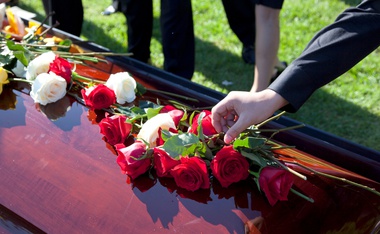



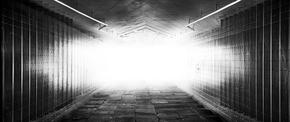
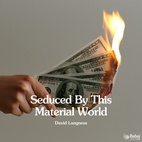

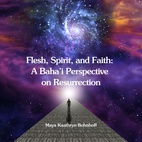

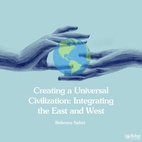





Comments
Sign in or create an account
Continue with Googleor